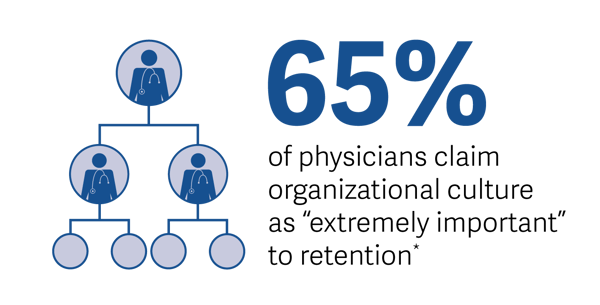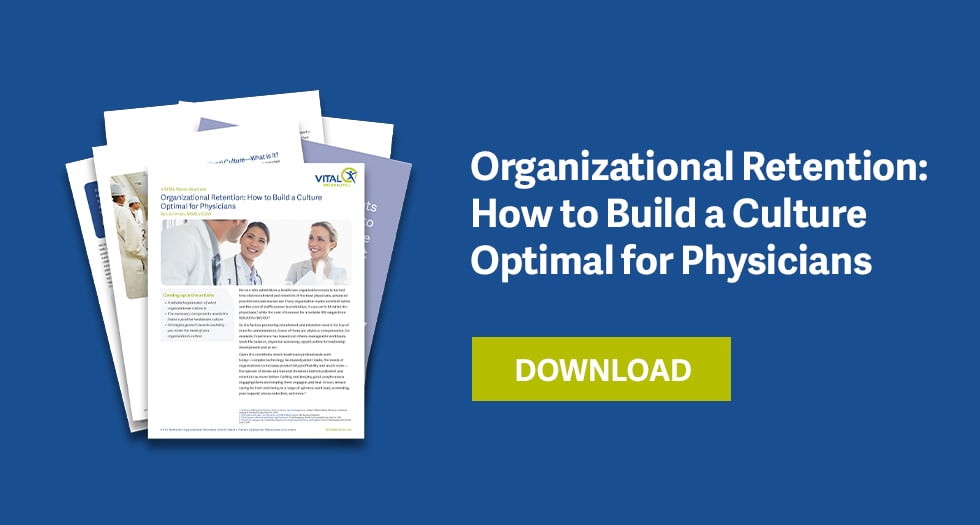When VITAL WorkLife and Cejka Search canvassed physicians for their 2017 Physician and Advanced Practitioner Well Being Survey, an eye-opening perspective emerged. Respondents rated organizational culture as the most important factor in maintaining physician well being.1 It was rated even more highly than two other critical factors, good business practices and physician self-care.
 For leaders concerned with promoting the well being of their providers (and the consequences of well being, engagement and retention)2 the question of culture is crucial.
For leaders concerned with promoting the well being of their providers (and the consequences of well being, engagement and retention)2 the question of culture is crucial.
But getting a handle on something as subtle as an organization’s culture isn’t easy. “If you want to provoke a vigorous debate, start a conversation on organizational culture,” writes Michael D. Watkins in the Harvard Business Review.3
In an effort to garner some clarity, Watkins set up a conversation on LinkedIn with executives from a number of industries. As he expected, responses ranged widely on attitudes and approaches—here are some of the key themes:
Culture is a set of consistent, observable patterns of behavior. “Aristotle said, ‘We are what we repeatedly do.’ This view elevates repeated behavior or habits as the core of culture and deemphasizes what people feel, think or believe,” Watkins writes.
Culture is shaped by incentives. That is, people “repeatedly do” what they are rewarded for doing, and the rewards can be either monetary and non-monetary—status, recognition and advancement.
Culture defines “what is” and “why-is.” In a more subjective sense, culture is the set of “jointly-held beliefs” (Watkins) and understandings about what the organization is really doing and why it is doing it.
Culture is a set of behavioral norms. “Here the focus is the role of culture in promoting and reinforcing ‘right’ thinking and behaving, and sanctioning ‘wrong’ thinking and behaving,” Watkins continues.
In addition, several of Watkins’ respondents called attention to complication factors.
- The wider culture and society shape the culture—current American habits and values will heavily influence an American organization.
- Large organizations have more than one culture. Nursing culture and physician culture will probably present different aspects,
for example. - Cultures are dynamic. “They shift, incrementally and constantly, in response to external and internal changes,” writes Watkins. “So, trying to assess organizational culture is complicated by the reality that you are trying to hit a moving target.” But for Watkins this dynamism isn’t just inevitable, it’s positive too: “The culture of the organization should always be learning and developing.”
Clearly, a positive organizational culture is a complex creation, a dynamic mix of deliberate efforts by leadership, spontaneous human interactions, and subtle states of mind. It can’t be made to order, but it can be fostered if everyone in the organization understands how important it is.
For an additional perspective on organization culture and its effects on recruitment and retention—one emphasizing communication as a cultural value—see our article “Organizational Retention: How to Build a Culture Optimal for Physicians.”



